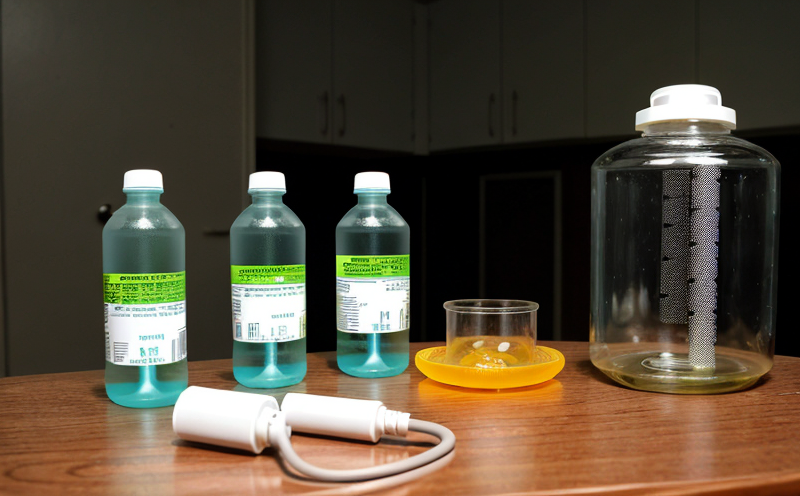ASTM D2461 Strontium 90 Determination Test in Water
The ASTM D2461 test method is a critical tool used to determine the concentration of Strontium-90 (Sr-90) in water. This radionuclide, a byproduct of nuclear fission processes, has significant implications for both environmental and public health due to its long half-life and high level of radioactivity. The primary purpose of this test is to ensure that water sources are safe for consumption or release into the environment.
The ASTM D2461 standard outlines precise procedures to collect and analyze water samples, focusing on the extraction of Sr-90 from aqueous solutions using a specific ion exchange resin. Once extracted, the sample is measured via gamma spectroscopy, which allows for accurate quantification of the radionuclide's presence.
The test is widely recognized as the standard method for monitoring radioactive contamination in water, particularly in areas with historical nuclear activities or where nuclear fuel reprocessing plants are located. Compliance with this test ensures that regulatory limits set by organizations like the Environmental Protection Agency (EPA) and World Health Organization (WHO) are adhered to.
The significance of Strontium-90 detection extends beyond mere compliance; it also aids in understanding environmental impacts, tracking radioactive dispersion patterns, and supporting long-term monitoring programs. For quality managers and R&D engineers involved in water treatment or nuclear waste management projects, this test is indispensable for ensuring product safety and regulatory adherence.
From a technical standpoint, the ASTM D2461 procedure involves several steps that are critical to obtaining reliable results. These include proper sample collection, storage conditions, filtration methods, and calibration of instruments used in gamma spectroscopy. Each step must be meticulously followed to avoid contamination or measurement errors.
Quality control measures such as duplicate analysis, use of reference materials, and regular instrument calibration are essential components of the ASTM D2461 process. These measures not only enhance accuracy but also provide a level of confidence in the results provided by laboratories performing this test.
Why It Matters
The detection and quantification of Strontium-90 in water are crucial for several reasons. Firstly, Strontium-90 is a beta-emitter with a half-life of approximately 28 years, making it one of the longest-lived radionuclides released into the environment during nuclear testing or accidents.
- Health Implications: Exposure to high levels of Strontium-90 can lead to bone cancer and leukaemia due to its ability to concentrate in bones, particularly in children. This makes water quality testing essential for public health protection.
- Environmental Impact: Water contaminated with Strontium-90 poses risks not only to humans but also to aquatic ecosystems. It can bioaccumulate in fish and other organisms, leading to long-term ecological disruptions.
- Regulatory Compliance: Numerous international standards mandate the testing of water sources for radioactive materials like Strontium-90. The ASTM D2461 test is specifically referenced by these regulations as a method to ensure compliance with safety limits set forth by regulatory bodies such as the EPA and WHO.
Quality and Reliability Assurance
The ASTM D2461 test relies heavily on several quality assurance practices to maintain reliability. These include:
- Duplicate Analysis: Performing the analysis twice using different samples or conditions to check for consistency.
- Reference Material Use: Utilizing certified reference materials that have known concentrations of Strontium-90 to calibrate instruments and verify results.
- Instrument Calibration: Regularly checking and adjusting gamma spectrometers to ensure they provide accurate measurements.
International Acceptance and Recognition
The ASTM D2461 test method is widely accepted internationally as a reliable means of detecting Strontium-90 in water. It has been adopted by regulatory bodies across the globe, including the EPA and WHO, who use these results to set permissible levels of radioactive contaminants.
ISO/IEC 17025, an international standard for accreditation of laboratories, specifically endorses ASTM D2461 as a robust method for radioactivity testing in water. This endorsement ensures that laboratories adhering to this protocol meet the highest standards of quality and reliability.





